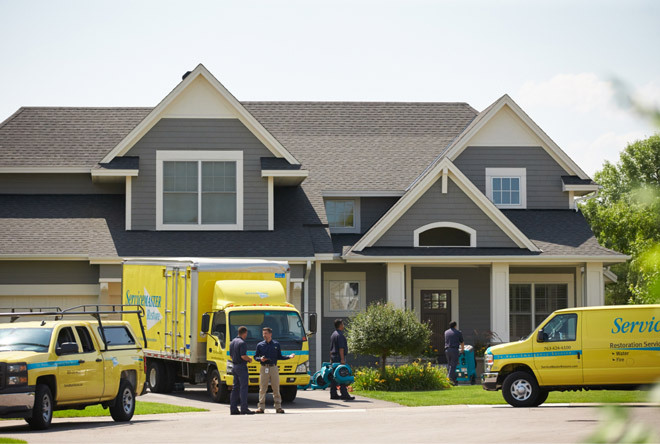Water Damage FAQ
Frequently Asked Questions – Emergency Water Recovery Guide
Structural Drying:
Q: How long will it take my property to dry?
A: Drying time is determined by a combination of factors including the location, duration, and source of water, the types of building materials, the weather conditions and how quickly emergency services begin. Through consistent monitoring and evaluation of the drying process, we can determine when the drying is complete. Your carpet may feel dry to the touch, but padding and subfloors may still be wet underneath. While there are no rules to determine how long your property will take to dry, we can tell you it may take between three to five days or more, depending on the conditions.
Q: Will turning up the heat help dry things out?
A: Not necessarily. We will adjust the temperature to its optimum setting for the proper drying conditions. Please do not change the setting or shut off the system; doing so may prolong the drying process.
Q: My wood floors are wet and buckling. Will they have to be replaced?
A: Wood flooring must be evaluated during the drying process. We employ specialized drying systems and dehumidifiers which enable us to create an environment where wood floors can dry more efficiently and resume their original shape. Due to the density of hardwood flooring and urethane finishes, drying may take up to three weeks or longer. If you filed a claim, your adjuster will work with you to make the final decision as to whether floors will need to be refinished or replaced.
Q: What about my wet furniture?
A: The extent of damage and the construction of the furniture will determine if your furniture can be restored. Your furniture must be dried before damage can be assessed. Non-salvageable furniture will be documented for you and if any items need to be discarded, a customer release form will need to be signed.
Q: Should I open the windows to help the drying process?
A: Opening your windows to assist the drying process is not always recommended. Outside weather conditions may vary, so the technician will determine when and if the outside air is appropriate.
Q: Can I walk in the area during the drying process?
A: It is strongly suggested that you keep traffic to a minimum. Wearing shoes is recommended for your safety.
Q: Do my belongings need to be moved away from the premises?
A: Depending on the source, nature, and extent of the fire, it may be best to move all belongings to a secure facility for cleaning and storage, and to make room for restoration or construction. ServiceMaster TEAM will work with you and your insurance claim representative to manage this process.
Carpet and Floor Coverings
Q: Can my carpet be restored or will it have to be replaced?
A: A few reasons your carpet may not be salvageable: Delamination (occurs when the backing separates from the carpet fiber), Loss of adhesion (may be caused by prolonged exposure to water or age of carpet), Permanent stains, Carpet covers wood flooring (to salvage the wood flooring), and Sewage contamination.
Q: What will you do with my area rugs?
A: Rugs are taken to our warehouse for special care.
Equipment
Q: What will it cost to run the equipment?
A: Based on average electrical rates, it may cost about one dollar per day per piece of drying equipment to operate. Actual rates can vary depending on current rates from your local electricity provider.
Payment
Q: Who is responsible for paying for the services?
A: Ultimately you, the property owner, are responsible for payment and will need to sign a form authorizing payment for the services. If this is an insurance claim, ServiceMaster TEAM generally collects only the deductible (co-payment) amount from you and bills the balance to your insurance provider as a service to you. If your claim is not covered by insurance or you decide not to file a claim, you will be expected to pay in full.


